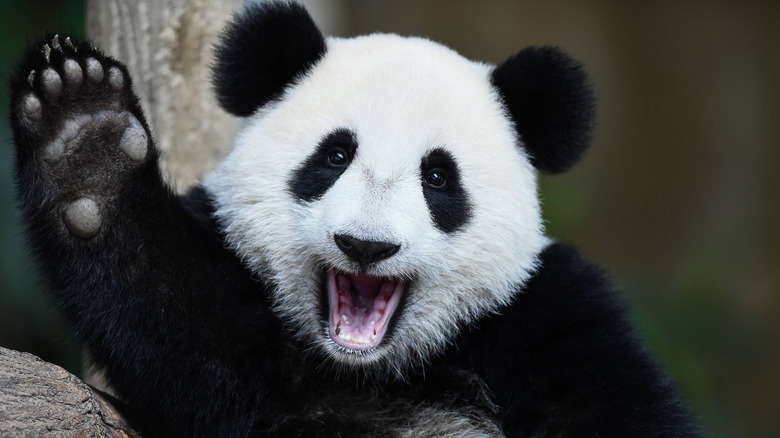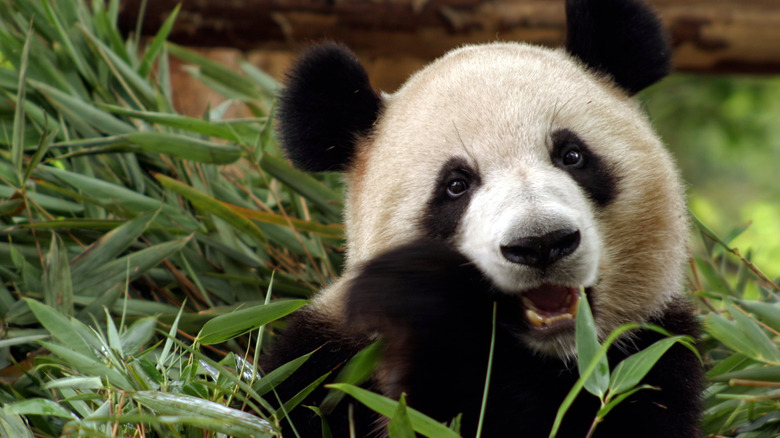The Scientific Reason Why Vegan Pandas Are So Round And Cuddly
The giant panda has been the logo of the World Wide Fund For Nature since it was founded back in 1961 (per WWF). It was surely chosen for its endangered nature, but another factor is that it's just beyond adorable, squishy, and eminently huggable.
Along with its unique black and white coloring, the primary physical characteristic of the panda is its big round body. This has long been puzzling for scientists because, famously, these noble creatures have an exclusively vegan diet: they eat (almost) only bamboo. Specifically, between 26 to 84 pounds of it daily, varying by the part of the plant in question, according to the WWF. Still, this wouldn't seem to account for the sheer size pandas can reach. One Kind Planet states that wild males can reach up to 350 pounds. The reason why they're so big, according to recent research, lies in their changing gut bacteria.
As Sky News reports, the Chinese Academy of Science's Institute of Zoology conducted research on pandas living in China's Qinling Mountains. They discovered that the different parts of the bamboo plant the pandas consumed — the new shoots contain a lot of protein but are largely accessible only in certain periods of summer and spring — had an effect on their metabolism and, in turn, on their impressive size.
Gut bacteria and bamboo access may be the key to pandas' weight
The study, according to the South China Morning Post, concluded that pandas' weight gain during the time the shoots are in season could be thanks to Clostridium butyricum, a particular bacteria in their digestive system. The issue with such a restricted diet is that these shoots are available for only a few months each year, meaning the pandas eat only the leaves of the plant instead. During this time, it seems, the friendly Clostridium butyricum — which these pandas seem to have in large numbers — helps them store fat.
One author of the research, Guangping Huang, stated (per Sky News) that the study "established ... a causal relationship between a panda's gut microbiota and its phenotype," which previous studies were unable to do. However, the team had "known these pandas have a different set of gut microbiota during the shoot-eating season for a long time."
Fuwen Wei headed up the research team, EurekAlert States, and they then performed a "fecal transplant" on mice and fed them a diet similar to the pandas'. The result was that these mice, too, gained weight. The bacterium does indeed seem to be the key. Per Huang: "Identifying what bacteria are beneficial for animals is very important, because one day we may be able to treat some diseases with probiotics."

